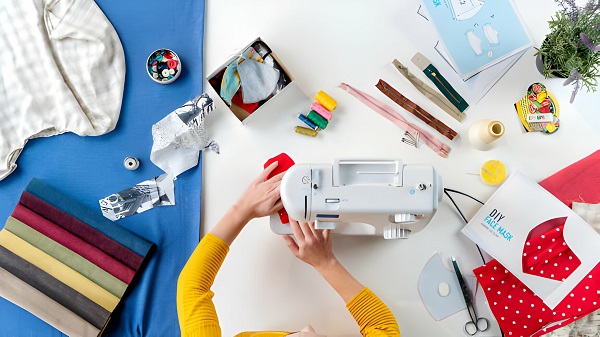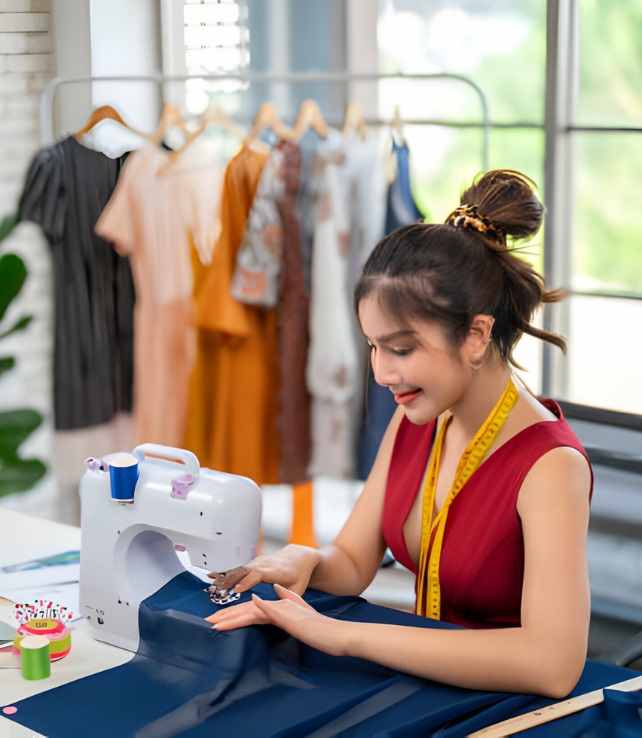Last Updated on January 2, 2025 by Emma
In an era increasingly dominated by sustainability and eco-conscious living, the concept of creative recycling stands out as both a necessity and an art form. The fashion industry, known for its substantial environmental footprint, presents a unique opportunity for individuals to make a significant impact through recycling. This article delves into the innovative world of turning old clothes into new crafts, a practice that not only reduces waste but also unleashes a wave of creativity and personal expression.

The Imperative for Creative Recycling
The urgency for adopting sustainable practices in fashion is underscored by alarming statistics. The global fashion industry is one of the major contributors to landfill waste, water pollution, and greenhouse gas emissions. The cycle of fast fashion exacerbates this problem, with millions of tons of textiles discarded annually. Creative recycling emerges not just as a crafty trend, but as an essential response to a global crisis, offering a pathway to reduce the ecological impact of our wardrobes.
Getting Started: Preparing Old Clothes for New Life
The journey of transforming old clothes into new crafts begins with a simple yet crucial step: selection and preparation. Start by sorting through your wardrobe, and identifying items that are no longer in use due to wear, size changes, or style preferences. Look for materials with interesting textures, patterns, or sentimental value. Once selected, clean and iron these textiles to prepare them for their transformation.
Techniques and Ideas for Upcycling Clothes
Fabric Yarn for Knitting and Crochet
Old t-shirts, especially those made of stretchy jersey material, can be cut into strips and stretched to create a continuous strand of yarn. This “t-shirt yarn” is ideal for knitting or crocheting robust items like rugs, baskets, and tote bags, offering a durable and stylish second life to worn-out clothes.
Patchwork Quilts and Throws
Patchwork quilting is a time-honored technique that finds new relevance in the context of creative recycling. Collect pieces of fabric from various garments, cutting them into squares or shapes that can be pieced together. This method is perfect for creating quilts, throws, and even clothing, embodying the stories of the materials it comprises.
Embroidery and Appliqué
Embroidery and appliqué can breathe new life into plain or damaged clothing. Use fabric scraps to create decorative elements on bags, jackets, or jeans. This approach not only recycles material but also allows for personal expression through design, making each piece uniquely yours.
Zero-Waste Weaving
Weaving offers another avenue for repurposing fabric scraps. Loom weaving with strips of old clothes can produce everything from wall hangings to placemats, infusing your home with handmade, eco-friendly decor. The zero-waste approach to weaving utilizes every last bit of fabric, ensuring that nothing goes to waste.
Accessory Creation
Accessories like jewelry, headbands, and belts can be crafted from the smallest scraps of fabric, buttons, and zippers. These small projects are an excellent way to start with creative recycling, requiring minimal materials and offering a gateway to more complex endeavors.
Community and Collaboration
Creative recycling thrives on community engagement and collaboration. Joining workshops or sharing projects on social media can inspire others and spread awareness about the importance of sustainable fashion. Schools and community centers often host crafting sessions focused on upcycling, providing spaces for learning and sharing techniques.
Challenges and Rewards
While the benefits of turning old clothes into new crafts are immense, the process is not without its challenges. It requires time, creativity, and sometimes new skills. However, the rewards go beyond the tangible products created. This practice fosters a deeper connection with our belongings, encouraging a more thoughtful and sustainable approach to consumption.
Environmental Impact and Beyond
The environmental impact of creative recycling is significant. By diverting clothes from landfills and reducing the demand for new textiles, each upcycled project contributes to a reduction in environmental degradation. Furthermore, this practice promotes a circular economy, where materials are kept in use for as long as possible, extracting the maximum value before recovery and regeneration.

Conclusion
Creative recycling represents a powerful intersection between sustainability, art, and personal expression. Turning old clothes into new crafts is not just about making do with what we have; it’s about reimagining what we can create. As we continue to confront the environmental challenges of our time, initiatives like these not only offer practical solutions but also inspire hope and action towards a more sustainable world. Through each stitch and snip, we weave together a future where fashion and ecology walk hand in hand, proving that with creativity and commitment, the possibilities are endless.

